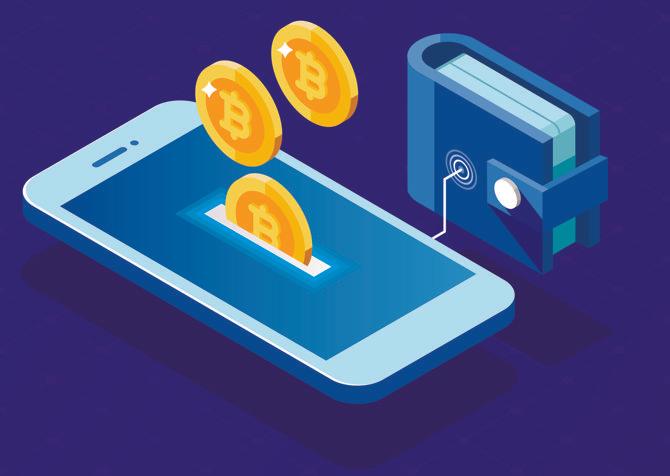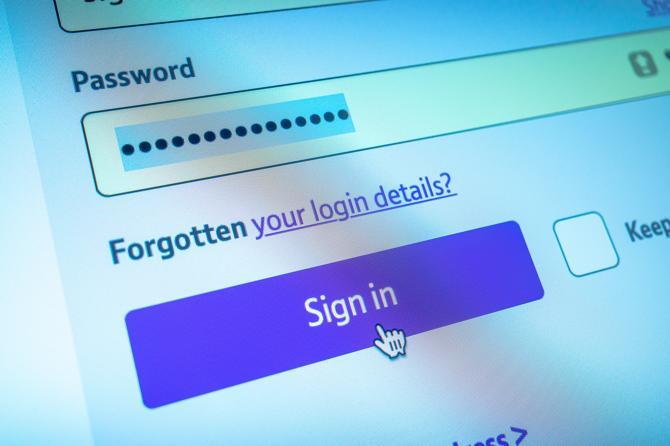Hva er skadelig (ondsinnet) kode?

Definisjon av ondsinnet kode
Ondsinnet kode er skadelige dataprogrammeringsskript utviklet for å skape eller utnytte systemsårbarheter. Denne koden er utviklet av en trusselaktør for å forårsake uønskede endringer, skade eller kontinuerlig tilgang til datamaskinsystemer. Ondsinnet kode kan føre til bakdører, sikkerhetsbrudd, informasjons- og datatyveri og andre potensielle skader på filer og databehandlingssystemer.
Hva er skadelig (ondsinnet) kode?
Ondsinnet kode er språket fiendtlige parter "snakker" for å manipulere datasystemer til farlig atferd. Den lages ved å skrive endringer eller tillegg til den eksisterende programmeringen av dataprogrammer, filer og infrastruktur.
Denne trusselen er det grunnleggende verktøyet som brukes for å utføre den store majoriteten av nettsikkerhetsangrep. Hackere undersøker og finner svakheter som er basert på språkene som brukes for å programmere datamaskiner. De lager deretter "fraser" kjent som skript eller lister over kommandoer for å misbruke disse sårbarhetene på disse språkene. Disse skriptene kan brukes på nytt og automatiseres via makroinstruksjoner eller makroer.
Hackere eller andre trusselaktører ville bevegd seg veldig sakte hvis de var begrenset til manuelle metoder for å utnytte datasystemer: Dessverre lar ondsinnet kode dem automatisere angrepene deres. Enkelte koder kan til og med kopiere, spre og forårsake skade på egenhånd. Andre typer kode kan trenge at menneskebrukere laster dem ned eller samhandle med dem.
Konsekvensene av ondsinnet kode kan føre til hva som helst av det følgende:
- Ødeleggelse av data
- Distribuert tjenestenektangrep (DDoS)
- Tyveri av påloggingsinformasjon og privat informasjon
- Løsepenger og utpressing
- Plage og ubehag
For å hjelpe deg med å beskytte deg selv la oss utforske hvordan disse truslene fungerer.
Hvordan fungerer en ondsinnet kode?
Enhver programmert komponent av et datasystem kan manipuleres av ondsinnet kode. Store komponenter som datanettverksinfrastruktur og mindre komponenter som mobil- eller skrivebordsapper er alle vanlige mål. Nettjenester, som nettsider og nettservere, kan også være mål. Ondsinnet kode kan infisere en hvilken som helst enhet som bruker en datamaskin til å drive, som:
- Tradisjonelle dataenheter - stasjonære PC-er, bærbare PC-er, mobiltelefoner, nettbrett.
- IoT-enheter - smarthjemenheter, infotainmentsystemer i bil (IVI).
- Datanettverksenheter - modem, rutere, servere.
Angripere bruker ondsinnede skript og programmer til å bryte ned betrodde deler av datasystemene. Fra dette punktet har de som mål å gjøre ett eller mer av følgende:
- eksponere brukere for ondsinnet kode, for å infisere dem og spre det videre.
- få tilgang til privat informasjon på de innbrutte systemene.
- overvåke bruken av et innbrutt system.
- Dypere brudd i et system.
Ondsinnet kode opprettes og brukes i et par distinkte faser. Den ondsinnede skriptede koden kan trenge menneskelig interaksjon eller andre datahandlinger for å utløse den neste hendelsen i hver fase. Noe kode kan til og med operere helt autonomt. Mesteparten av ondsinnet kode følger denne strukturen:
- Undersøk og gransk for sårbarheter.
- Programmer ved å skrive kode for å utnytte sårbarheter.
- Eksponer datasystemer for ondsinnet kode.
- Utfør koden gjennom et relatert program eller på egenhånd.
Undersøkelse og programmering er oppsettfasen av et angrep. Før en angriper kan bryte seg inn i et system, må de først ha verktøyene til å bryte seg inn. De må lage koden hvis den ikke allerede finnes, men kan også bruke eller endre eksisterende ondsinnet kode for å forberede angrepet.
Resultatet av ondsinnet skripting er enten en automatisk utførbar applikasjon som aktivere seg selv og ta ulike former. Enkelte kan inkludere makroer og skript i JavaScript, ActiveX-kontroller, Powershell-misbruk, pushet innhold, programtillegg, skriptingspråk eller andre programmeringsspråk som er utviklet for å forbedre nettsider og e-post.
Eksponering av datasystemer kan skje gjennom direkte grensesnittporter som USB eller nettverksforbindelser som mobil og Wi-Fi. Vellykkede eksponeringer trenger bare en måte ondsinnet kode kan reise til maskinen din.
Eksponering i omfattende angrep avhenger av høykontaktkanaler som populære nettsteder og søppelpost, mens mer målrettet innsats bruker sosiale manipulasjonsmetoder som spydnettfisking. Noe innsideinnsats kan til og med plante ondsinnet kode i et privat nettverk som et bedriftsintranett ved å styre USB-stasjonstilkobling på en lokal sluttbrukermaskin.
Utførelse skjer når et eksponert system er kompatibelt med den ondsinnede koden. Når en målrettet enhet eller et målrettet system eksponeres for ondsinnet kode, kan det påfølgende angrepet inkludere uautoriserte forsøk på noe av det følgende:
- Endre data — ikke-tillatt kryptering, svekket sikkerhet, osv.
- Slette eller ødelegge data — nettsideservere, osv.
- Skaffe data — kontopåloggingsinformasjon, personlig informasjon, osv.
- Tilgang til begrensede systemer — private nettverk, e-postkontoer, osv.
- Utføre handlinger — kopiere seg selv, spre ondsinnet kode, ekstern enhetskontroll, osv.
Hvordan sprer ondsinnet kode seg?
Ondsinnet kode kan brukes til å bryte inn i systemer på egenhånd, muliggjøre sekundær ondsinnet aktivitet eller til å kopiere og spre seg selv. Uansett må den opprinnelige koden flytte seg fra en enhet til en annen.
Disse truslene kan spre seg over nesten enhver kommunikasjonskanal som overfører data. Ofte inkluderer vektorene for spredning:
- Onlinenettverk - intranett, P2P-fildeling, offentlige Internett-nettsteder, osv.
- Sosial kommunikasjon - e-post, SMS, pushinnhold, mobilmeldingsapper, osv.
- Trådløs tilkobling — Bluetooth, osv.
- Direkte enhetsgrensesnitt — USB, osv.
Å besøke infiserte nettsteder eller å klikke på en dårlig e-postlenke eller vedlegg er vanlige inngangsporter for ondsinnet kode å snike seg inn i systemet ditt. Men denne trusselen kan også komme fra legitime kilder i tillegg til direkte ondsinnede. Alt fra offentlige USB-ladestasjoner til utnyttede programvareoppdateringsverktøy har blitt misbrukt til disse formålene.
"Innpakkingen" av ondsinnet kode er ikke alltid åpenbar, men offentlige dataforbindelser og meldingstjenester er den viktigste veien å følge med. Nedlastinger og URL-lenker brukes ofte av angripere til å bygge inn farlig kode.
Typer ondsinnet kode
Mange ondsinnede kodetyper kan skade datamaskinen din ved å finne inngangspunkter som fører til dine dyrebare data. Her er noen vanlige syndere, i en stadig større liste.
Virus
Virus er selvkopierende ondsinnet kode som legges ved makroaktiverte programmer for å utføre. Disse filene reiser via dokumenter og andre filnedlastinger, noe som gjør at viruset infiltrerer enheten din. Når viruset utføres, kan det spre seg selv og spre seg gjennom systemet og tilkoblede nettverk.
Ormer
Ormer er også selvkopierende og selvspredende kode som virus, men krever ikke ytterligere handling for å gjøre det. Når en dataorm har kommet seg inn i enheten din, kan disse ondsinnede trusler utføre helt på egenhånd - uten noen assistanse fra et brukerkjørt program.
Trojanske hester
Trojanske hester er lokkefiler som frakter nyttelaster med ondsinnet kode, og krever at en bruker bruker filen eller programmet som skal utføres. Disse truslene kan ikke selvkopiere eller spre seg selv autonomt. Men den ondsinnede nyttelasten kan inneholde virus, ormer eller annen kode.
Cross-site scripting (XSS)
Cross-site scripting forstyrrer brukerens nettsurfing ved å injisere ondsinnede kommandoer i nettapplikasjoner de bruker. Dette endrer ofte nettinnhold, fanger opp konfidensiell informasjon eller leverer en infeksjon til brukerens enhet.
Bakdørsangrep
Applikasjonsbakdørstilgang kan kodes til å gi en nettkriminell ekstern tilgang til det kompromitterte systemet. Bortsett fra å eksponere sensitive data, som privat selskapsinformasjon, kan en bakdør gjøre at en angriper kan bli en avansert vedvarende trussel (APT).
Nettkriminelle kan da bevege seg sideveis gjennom det nylig ervervede tilgangsnivået, tømme en datamaskins data eller til og med installere spionvare. Disse truslene kan nå et høyt nivå: U.S. Government Accountability Office har til og med advart mot ondsinnet kodes trussel mot nasjonal sikkerhet.
Eksempler på angrep med ondsinnet kode
Ondsinnet kode kan komme i mange former og har vært veldig aktiv tidligere. Blant forekomsten av disse angrepene, her er noen av de mest velkjente:
Emotet-trojaner
Emotet-trojaner dukket først opp i 2014 og utviklet seg fra sine skadeprogramrøtter til å bli søppelpost full av ondsinnet kode. Angriperne bruker nettfiskingstaktikk som presserende e-postlinjer (f.eks. "Betaling nødvendig") for å lure brukere til nedlastinger.
Når det er på en enhet, har Emotet vært kjent for å kjøre skript som leverer virus, installere kommando- og kontrollskadeprogram (C&C) for botnetrekruttering og mer. Denne trusselen tok en kort pause i 2018 før den kom tilbake og ble en SMS-skadeprogramtrussel i prosessen.
Stuxnet-orm
Siden 2010 har Stuxnet-dataormen og dens etterfølgere rettet seg inn mot nasjonal infrastruktur. Det første dokumenterte angrepet involverte iranske atomfasiliteter via USB-minnepinne, og ødela kritisk utstyr. Stuxnet har opphørt siden den gang, men kildekoden har blitt brukt for å skape lignende høyt målrettede angrep gjennom 2018.
Hvordan beskytte seg mot angrep med ondsinnet kode
For de fleste ondsinnede trusler er antivirusprogramvare med automatiske oppdateringer, muligheter for fjerning av skadelig programvare og nettsurfesikkerhet det beste forsvaret. Men forebygging av ondsinnet kode er kanskje ikke mulig med antivirusprogramvare på egenhånd.
Antivirus forhindrer og fjerner normalt virus og andre former for skadelig programvare — eller skadelig programvare — er en underkategori av ondsinnet kode. Den bredere kategorien av ondsinnet kode inkluderer nettstedskript som kan utnytte sårbarheter for å laste opp skadelig programvare. Per definisjon kan ikke all antivirusbeskyttelse behandle visse infeksjoner eller handlinger forårsaket av ondsinnet kode.
Selv om antivirus fortsatt er essensielt for proaktiv infeksjonsfjerning og -forsvar, så får du her noen verdifulle måter å beskytte deg selv:
- Installer anti-skriptingprogramvare for å forhindre at JavaScript og relatert kode kjører uten godkjenning.
- Vær forsiktig med lenker og vedlegg. Enhver melding som inneholder URL-lenker eller vedlegg — enten det er på e-post eller tekstmelding — kan være en vektor for ondsinnet kode.
- Aktiver nettleserens popup-blokkerer for å forhindre at skript leverer ondsinnet innhold i uønskede nettleservinduer.
- Unngå å bruke kontoer på administratornivå for daglig bruk. Tillatelser på høyt nivå kreves vanligvis for å automatisk kjøre skript og programmer.
- Bruk datasikkerhetskopier for å beskytte uerstattelige filer og dokumenter.
- Vær forsiktig med å bruke enhver offentlig datatilkobling. USB-tilkoblinger blir generelt oversett, men kan enkelt huse ondsinnet kode. Offentlig Wi-Fi er også en vanlig trussel som angripere kan bruke for å levere ondsinnet kode.
- Bruk en riktig konfigurert brannmur for å blokkere uautoriserte tilkoblinger. Hvis ondsinnet kode infiltrerer maskinen din og kobler seg til utover for å be om skadeprogramnyttelaster, kan en brannmur bidra til å stoppe dette. Vær sikker på at brannmuren din er konfigurert til å blokkere som standard og hviteliste eventuelle forventede og pålitelige tilkoblinger.
Beslektede koblinger:
Hva er skadelig (ondsinnet) kode?
Kaspersky





